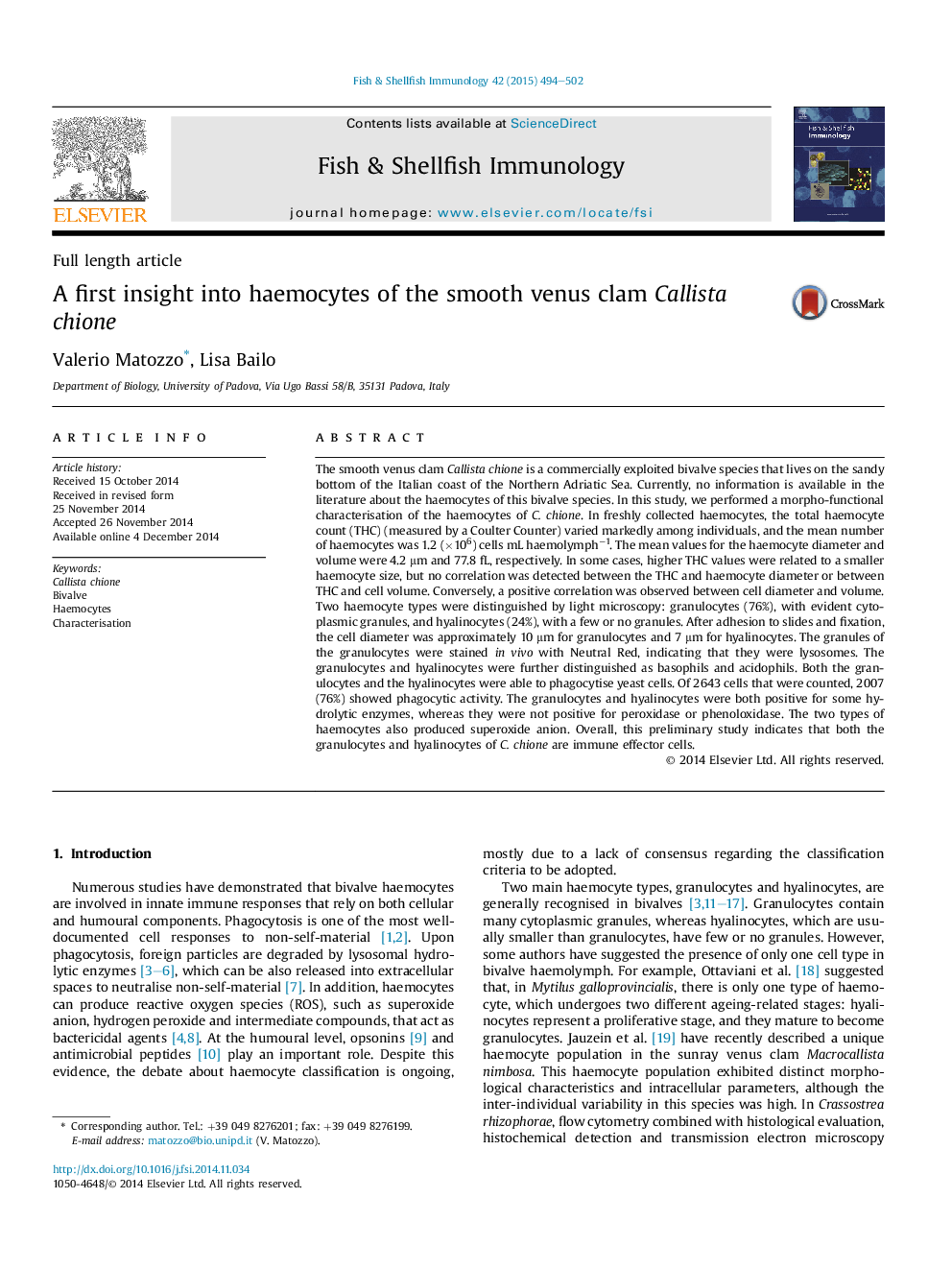| کد مقاله | کد نشریه | سال انتشار | مقاله انگلیسی | نسخه تمام متن |
|---|---|---|---|---|
| 2431373 | 1106753 | 2015 | 9 صفحه PDF | دانلود رایگان |

• Granulocytes and hyalinocytes were distinguished in Callista chione.
• Granulocytes were more abundant than hyalinocytes.
• THC varied markedly among individuals.
• Both the granulocytes and the hyalinocytes were able to phagocytise yeast cells.
• Both cell types were positive for some hydrolytic enzymes.
The smooth venus clam Callista chione is a commercially exploited bivalve species that lives on the sandy bottom of the Italian coast of the Northern Adriatic Sea. Currently, no information is available in the literature about the haemocytes of this bivalve species. In this study, we performed a morpho-functional characterisation of the haemocytes of C. chione. In freshly collected haemocytes, the total haemocyte count (THC) (measured by a Coulter Counter) varied markedly among individuals, and the mean number of haemocytes was 1.2 (×106) cells mL haemolymph−1. The mean values for the haemocyte diameter and volume were 4.2 μm and 77.8 fL, respectively. In some cases, higher THC values were related to a smaller haemocyte size, but no correlation was detected between the THC and haemocyte diameter or between THC and cell volume. Conversely, a positive correlation was observed between cell diameter and volume. Two haemocyte types were distinguished by light microscopy: granulocytes (76%), with evident cytoplasmic granules, and hyalinocytes (24%), with a few or no granules. After adhesion to slides and fixation, the cell diameter was approximately 10 μm for granulocytes and 7 μm for hyalinocytes. The granules of the granulocytes were stained in vivo with Neutral Red, indicating that they were lysosomes. The granulocytes and hyalinocytes were further distinguished as basophils and acidophils. Both the granulocytes and the hyalinocytes were able to phagocytise yeast cells. Of 2643 cells that were counted, 2007 (76%) showed phagocytic activity. The granulocytes and hyalinocytes were both positive for some hydrolytic enzymes, whereas they were not positive for peroxidase or phenoloxidase. The two types of haemocytes also produced superoxide anion. Overall, this preliminary study indicates that both the granulocytes and hyalinocytes of C. chione are immune effector cells.
Journal: Fish & Shellfish Immunology - Volume 42, Issue 2, February 2015, Pages 494–502